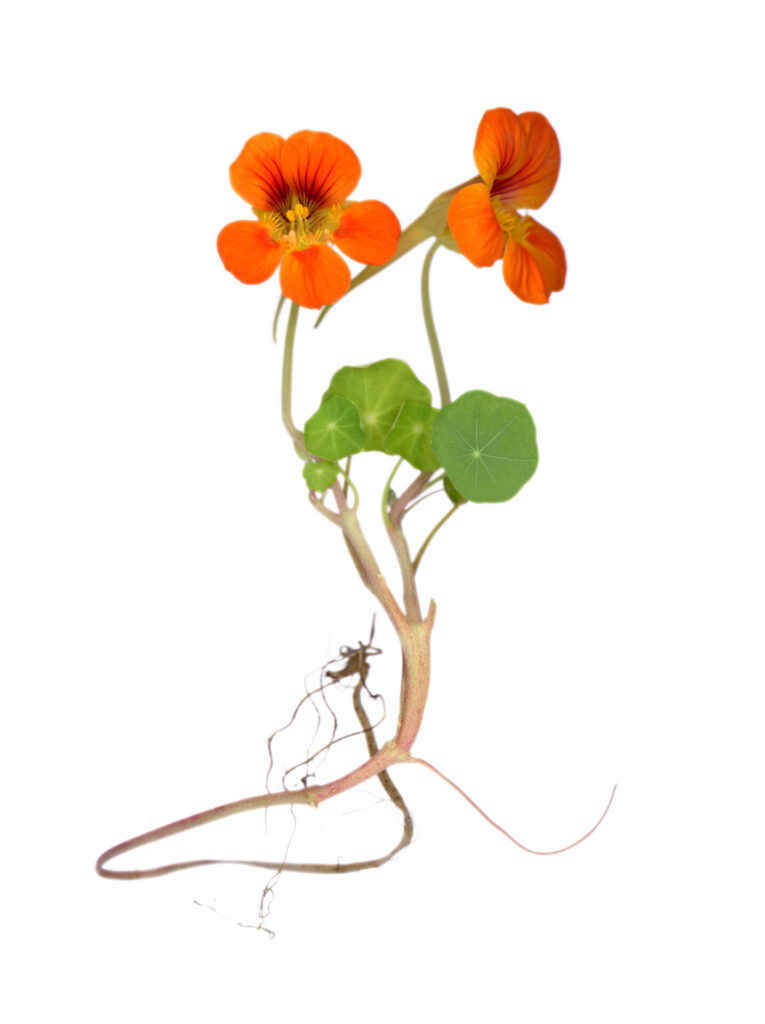Nasturtium belongs to the Tropaeolaceae family and is native to South America, specifically in Peru.
It is a perennial and climbing plant, which can reach a height of up to 11 inches. Its flowering season is from July to September while the seeds will become ripe from August to October. The flowers are large and trumpet-shaped, with some of the most common colors being red, orange, yellow, and creamy white. The leaves and flowers are both edible. Its leaves taste peppery, which will have a stronger flavor as it grows older. Its flowers also have a distinct spiciness, making it a colorful addition to a salad of greens. The unripe seeds are good for pickling.
While there are over 50 varieties, they fall into one of three categories: dwarf or bush (shorter), semi-trailing (2 to 3 feet tall and wide), full trailing (6 to 8 feet tall and wide).
Nasturtium grows in USDA zones 3 to 10. It is an annual but will sow its own seeds and can sometimes take over an area in your garden if left unchecked.
They are also said to be very beneficial for chickens, especially laying hens.






